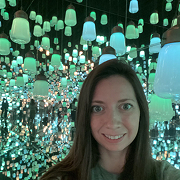Here we go: another big change in the advertising landscape! Earlier this month, Google began rolling out their generative AI experience in search to everyone in the US.
What is this?
If you’ve Googled, well, anything lately, you’ve probably seen Google’s generative AI experience, aka an AI-generated answer at the very top of the search page (above ads and organic results).
While this experience has been in beta since last May, Google announced at this year’s I/O Conference that these experiences will be rolling out to everyone in the US. The company also expanded on its (inevitable) plan to monetize this experience, via a to-be-released “Sponsored” section of AI results.
Why does it matter?
This is just the beginning of a potentially seismic shift in the way that AI influences the web – and in particular, the fundamental deal wherein advertising subsidizes the free and open internet that we’ve all come to love.
Right now, people search for information on Google, which enables Google to make money off of search ads. Those searches also lead to web visits, which publishers monetize via ads, sales, or donations. Meanwhile, advertisers (including many nonprofits) derive huge value from being able to serve ads on search and those web placements… and hopefully all of this benefits users with free or discounted access to a thriving open web. In short, it’s an ecosystem that provides value all around.
Generative AI threatens this entire proposition: if you can ask chatGPT for any information on earth, why use Google? If chatGPT can crawl the web and summarize its collective knowledge, why visit any individual website? It’s a dark scenario: RIP ads, the websites they support, the advertisers who buy them, and the everyday people who benefit from the whole thing. We’re already seeing evidence of this as the digital ads industry braces for lower volume on search ads and fewer web visits, and publishers prepare for the impact of lower traffic to their already-slim margins. Anecdotally, many of our clients are already seeing a decline in search performance from the release.
Cool, so we’re just $%#!ed?
No! At least, not yet: the full robot apocalypse is a ways out. For now, Google’s incentives remain with us (advertisers) — so the best thing nonprofits can do is stay agile, embrace the benefits of AI-driven advertising (they exist!), and focus on the fundamentals of building a strong brand.
Here’s what we recommend to mitigate impacts on Google search specifically:
- Make sure you’re using Google’s value-based, AI-fueled Smart Bidding for your standard search campaigns. This allows Google to automatically optimize your bidding to maximize conversions or to a particular ROAS. We have seen that implementing these bidding strategies can improve donations/revenue for your ads program.
- Take advantage of Google Ads AI conversational experience. This new add-on to the Google Ads interface can help recommend keywords and headlines to improve campaign performance.
- Assess the state of your brand and its possible impact on generative AI recommendations. While Google has remained cagey about how its generative AI experience decides what to recommend, we can assume it’s more likely to recommend your brand based on user familiarity, media coverage, search volume, and more. This means we might see a very not cool “the rich get richer and the poor get poorer” effect, wherein nonprofits with substantial brand footprints see an increase in traffic, while smaller and lower-profile organizations struggle to break through. Depending on where your brand falls, this might change the importance that you place on brand awareness, media exposure, and social audience-building. (Looking to build your brand? M+R can help! Reach out to hello@mrss.com and we can connect you with our experts in advertising and campaign strategy.)
- Examine your current SEO strategies. We still don’t know how often Google’s generative AI model will update its underlying data — but in the same way that organic search has been a core part of web strategy, we expect that generative AI optimization will become a central concern for nonprofits moving forward.
This is also a good opportunity to holistically reevaluate your media mix, and the role that Google has in it. We’ve typically considered Google search to be the endpoint of a long conversion path: nonprofits introduce themselves to potential donors via prospecting ads, reinforce their message via retargeting, and then reap the rewards when a supporter explicitly signals their intent to donate via a targeted search (e.g. Googling “donate to [nonprofit]”). As that path changes, nonprofits might consider adjustments to their full-funnel approach:
- Embrace AI-driven campaigns that mix multiple channels and points in the consumer journey — specifically Google’s Performance Max format. Performance Max is unique in that it doesn’t make assumptions about a user’s stage in the conversion journey based on the channel they’re currently using (YouTube, search, or display): rather, it uses a host of signals to make an educated guess about their likelihood to convert, and adjusts bidding accordingly. Fans of this year’s Benchmarks will recall that an increasing number of nonprofits seem to already be experimenting with this format, and that we think it’s a major factor in the strong ROAS we reported for display ads!
- Prioritize testing on other channels (such as programmatic display and video, social, or connected TV) — and potentially adjust your KPIs to reflect more uncertainty in search performance, as well as the potential for smaller retargeting pools. Savvy marketers will note that this is a period of major change for programmatic advertising due to the ongoing and escalating deprecation of third-party cookies: watch this space for more guidance on that! Nonetheless, we were cheered to see strong results for many of those tactics in our most recent Benchmarks study: display and digital audio appear particularly promising.
- Consider lead generation as a means to offset declining retargeting pools. While there’s no replacement for the web traffic driven by organic and paid search, there’s certainly room to mitigate those losses through investments in email acquisition: in fact, such investments are arguably more durable than web retargeting, as access to email gives nonprofits the flexibility to continue messaging supporters across channels and without the time-limitations associated with traditional web retargeting.
Key Takeaways
Generative AI is almost certain to fundamentally alter the way we all use the internet — and by extension, the way that ads subsidize and monetize the online ecosystem. The long-term impact on nonprofits remains murky, but we’ll be keeping a close eye on it (and recommending our best options to stay agile as things develop.)
P.S. These insights were deeply shaped by the data in this year’s Benchmarks study — check it out if you haven’t yet!




